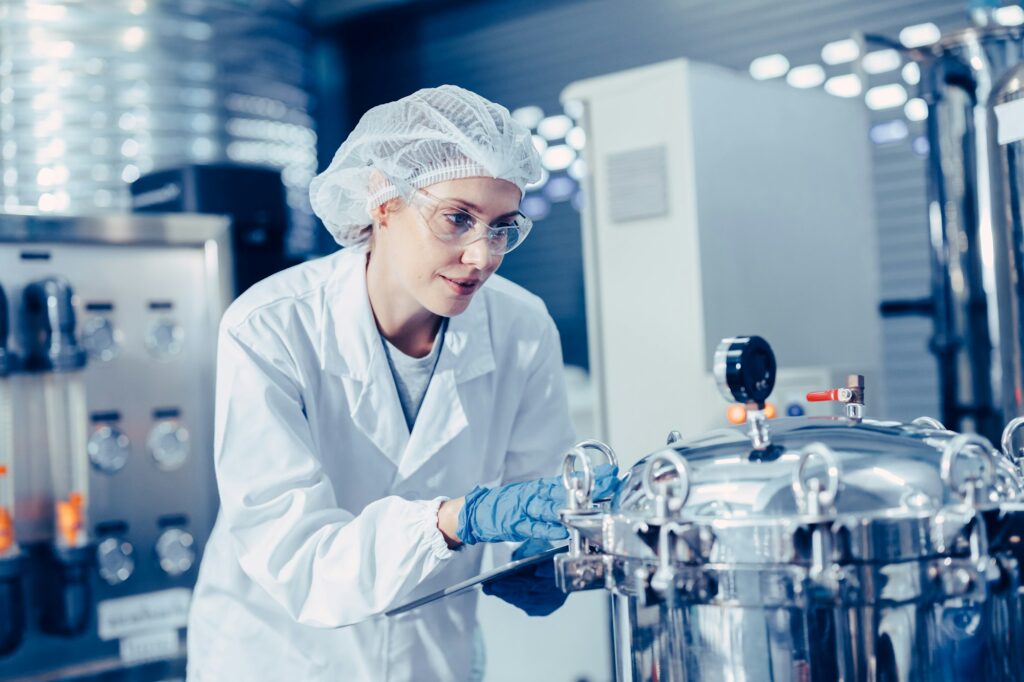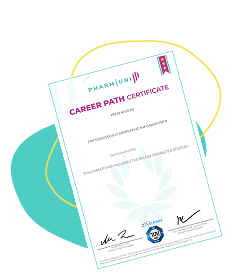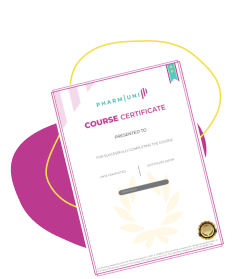Step into the world of GMP facility operations with our in-depth guide. In this article, we’ll take a daily deep dive into the intricate workings of Good Manufacturing Practice facilities and how they operate. Whether you’re new to the industry or a seasoned professional, understanding the ins and outs of facility operations is essential for maintaining compliance and ensuring product quality.
With engaging and informative content, we’ll explore everything from facility design and layout to personnel training and documentation practices. Discover the importance of maintaining a clean and sanitary environment, and learn about the rigorous protocols in place to prevent contamination.
Through real-life case studies and expert insights, we’ll provide invaluable tips and best practices to enhance efficiency and productivity.

Stay ahead of the curve by staying informed about the latest trends and technologies revolutionizing GMP operations.
Join us as we unlock the secrets to successful GMP facility operations and equip you with the knowledge needed to excel in this demanding field.
Importance of GMP in Facility Operations
Good Manufacturing Practice (GMP) is a set of regulations and guidelines that ensure the quality, safety, and efficacy of pharmaceuticals, food products, and medical devices. GMP facility operations play a crucial role in maintaining compliance with these standards. By adhering to GMP, companies demonstrate their commitment to producing products that are safe for consumers and meet the highest quality standards.
In GMP facility operations, every aspect of the production process is carefully controlled and monitored. From the receipt of raw materials to the packaging and distribution of finished products, strict protocols are in place to prevent contamination, ensure proper documentation, and maintain product integrity. Compliance with GMP guidelines is not only a legal requirement but also a fundamental aspect of building trust with customers and regulators.
GMP facility operations go beyond just following regulations. They involve implementing robust quality systems, continuously improving processes, and fostering a culture of excellence. By emphasizing quality at every step of the production process, companies can reduce the risk of product recalls, customer complaints, and regulatory sanctions.
Daily Tasks in GMP Facility Operations
In GMP, each day brings a set of tasks and responsibilities to ensure smooth production and compliance. These tasks can vary depending on the nature of the facility, but some common activities include:
- Raw materials are received, inspected, and verified for quality and compliance with specifications. Proper documentation and sampling procedures are followed to ensure traceability and accountability.
Before production can begin, equipment must be set up and calibrated to ensure accurate and reliable operation. Regular maintenance and calibration schedules are established to prevent equipment malfunction and ensure consistent product quality.
Batch records contain detailed information about each production run, including materials used, equipment settings, and process parameters. These records are reviewed and approved by designated personnel to ensure compliance with specifications and regulatory requirements.
Throughout the production process, samples are taken and tested to monitor critical parameters such as temperature, pressure, pH, and product quality attributes. These tests help identify any deviations from the expected results and allow for timely corrective actions.
Maintaining a clean and sanitary environment is paramount. Therefore, proper cleaning and sanitization procedures are followed to prevent cross-contamination, microbial growth, and product adulteration. This also includes, cleaning records which are meticulously maintained to demonstrate the effectiveness of cleaning procedures.

Key Elements of GMP Facility Operations
Successful GMP facility operations require attention to detail and comprehensive knowledge of key elements that contribute to product quality and compliance. Let’s explore some of these essential elements:
➡️ Standard Operating Procedures (SOPs) for GMP Facility Operations
Standard Operating Procedures (SOPs) are the backbone of GMP facility operations. These documented instructions provide a step-by-step guide for employees to perform their tasks consistently and accurately. SOPs cover a wide range of activities, including material handling, equipment operation, cleaning procedures, and quality control checks.
SOPs ensure that critical processes are executed in a standardized manner, minimizing the risk of errors and deviations. They provide clear instructions on how to handle materials, use equipment, and maintain a clean and controlled environment. Regular review and training on SOPs are essential to keep employees up-to-date with the latest procedures and best practices.
➡️ Equipment Maintenance and Calibration in GMP Facility Operations
Equipment plays a vital role in GMP facility operations, and its proper maintenance and calibration are crucial for ensuring reliable and consistent performance. Regular preventive maintenance schedules are established to identify and address potential issues before they lead to equipment failure or product quality problems.
Calibration of equipment is essential to ensure accurate measurements and control of critical process parameters. The procedures for calibration follow a traceable and documented process, involving the use of calibrated standards and instruments. Calibration records are maintained to demonstrate compliance with GMP requirements.
In addition to preventive maintenance and calibration, equipment qualification is another important aspect. Equipment qualification involves verifying that equipment is suitable for its intended use and operates within specified parameters. Qualification activities include installation qualification (IQ), operational qualification (OQ), and performance qualification (PQ), which ensure equipment meets predefined criteria for functionality, accuracy, and reliability.
➡️ Quality Control and Assurance
Maintaining product quality is at the core of any GMP environment. Quality control and assurance processes are implemented to ensure that products meet the required specifications and are safe for consumption or use.
Key Aspects of Quality Control and Assurance in GMP
Raw materials used in manufacturing processes undergo thorough testing to ensure they meet specifications and are free from contaminants. Samples are collected and tested for attributes such as purity, potency, and microbiological contamination. Only materials that pass the testing criteria are released for use in production.
During the production process, in-process testing and monitoring are conducted to verify that critical parameters and quality attributes are within acceptable limits. This includes testing for factors such as pH, viscosity, particle size, and dissolution rates. Any deviations from the expected results are investigated, and appropriate corrective actions are taken to ensure product quality.
Before products can be released for distribution, they undergo final testing to ensure they meet all quality specifications. Finished product testing includes a comprehensive analysis of attributes such as identity, strength, purity, and stability. Only products that meet the predefined criteria are approved for release, while those that fail to meet the standards are rejected or undergo further investigation and corrective actions.
Stability testing is a critical component of quality control and assurance in GMP facility operations. It involves subjecting products to specific environmental conditions (e.g., temperature, humidity) over an extended period to evaluate their shelf life and ensure they remain safe and effective throughout their intended storage period. Stability testing helps determine appropriate storage conditions and expiration dates for products.
In GMP environments, any changes to processes, equipment, or materials must be properly evaluated, documented, and approved through a change control process. Change control ensures that potential impacts on product quality, safety, and efficacy are thoroughly assessed and managed. This includes conducting risk assessments, performing validation studies, and updating relevant documentation and procedures.
➡️ Training and Qualification of Personnel
The success of of any company relies heavily on the knowledge, skills, and qualifications of the personnel involved. Training and qualification programs are implemented to ensure that employees understand their roles, responsibilities, and the importance of GMP compliance. Let’s delve into the key aspects of training and qualification a GMP environment :
GMP training programs
GMP training programs are designed to educate employees about the principles and practices of GMP. These programs cover topics such as regulatory requirements, SOPs, documentation practices, hygiene practices, and quality control procedures. Training sessions are conducted at regular intervals, and employees are required to demonstrate their understanding through assessments or evaluations.
Personnel qualification and competency assessment
In addition to general GMP training, personnel in GMP facilities often require specific qualifications and competencies to perform their assigned tasks. Qualification programs ensure that individuals have the necessary education, training, and experience to carry out their responsibilities effectively. Competency assessments may include practical demonstrations, written exams, or observed performance evaluations.
Continuous training and professional development
GMP facilities are subject to evolving regulations, technological advancements, and industry best practices. To stay current and maintain a high level of expertise, ongoing training and professional development programs are essential. These programs enable employees to enhance their skills, expand their knowledge, and adapt to changes in the regulatory landscape or manufacturing processes.
➡️ Compliance and Audits in GMP Facilities
Compliance with GMP regulations is a critical aspect of GMP facility operations. Regulatory authorities, such as the Food and Drug Administration (FDA) in the United States, conduct inspections and audits to ensure that companies adhere to GMP guidelines. Let’s explore the importance of compliance and the role of audits in GMP facility operations:
Compliance with GMP is not optional but mandatory for companies involved in manufacturing pharmaceuticals, food products, and medical devices. Non-compliance can lead to serious consequences, including product recalls, legal actions, loss of reputation, and regulatory sanctions. By maintaining compliance, companies demonstrate their commitment to producing safe and high-quality products.
Audits and inspections are conducted by regulatory authorities, customers, and internal quality assurance teams to assess compliance with GMP regulations. These audits evaluate various aspects of GMP facility operations, including documentation practices, process controls, facility cleanliness, equipment maintenance, and personnel training. Audits can be announced or unannounced, and companies must be prepared at all times to showcase their compliance efforts.
During audits, inspectors review records, conduct interviews, and perform facility walkthroughs to assess compliance. They may also request additional documentation or samples for testing. Any deficiencies or non-compliance identified during the audit must be promptly addressed through corrective and preventive actions.
Conclusion
GMP facility operations are complex, but with the right knowledge and practices, companies can maintain excellence in producing safe and high-quality products. By prioritizing compliance, investing in training and qualification programs, implementing robust quality control and assurance processes, and staying informed about the latest trends and technologies, companies can stay ahead of the curve in this demanding field.
Successful GMP facility operations require a collaborative effort from all stakeholders, including management, employees, and regulatory authorities. By fostering a culture of quality, continuous improvement, and adherence to GMP guidelines, companies can not only meet regulatory requirements but also gain a competitive edge in the market.
Unlock the secrets to successful GMP facility operations and equip yourself with the knowledge needed to excel in this demanding field. Stay informed, embrace best practices, and strive for excellence every day. Together, we can shape the future of GMP facility operations and ensure the highest standards of product quality and consumer safety.

